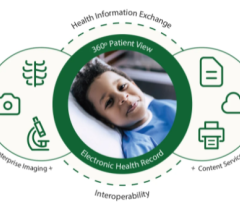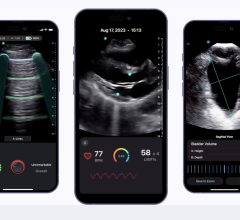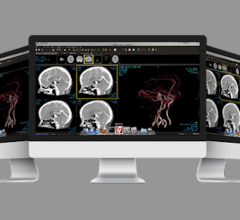
Attendees test the interoperability of their EHR and PACS products.
OAK BROOK, IL – Systems engineers from 64 leading healthcare technology vendors, including GE Healthcare, Siemens, IBM, McKesson, Hologic, Misys, Philips, Kodak and [newly GE Healthcare-acquired] IDX Systems, convened in the basement of the Radiological Society of North America (RSNA) headquarters in mid-January to cross competitor lines and test the interoperability of their PACS and electronic healthcare record (EHR) systems.
Ninety-five percent of the medical information marketplace attended and participated, according to Bill Majurski, electronics engineer, National Institute of Standards in Technology, one of the organizations that creates the tests in collaboration with Northwestern University, Washington University in St. Louis, School of Medicine, NIRA and other independent contractors.
Vendors of radiology and cardiology modalities, as well as RIS/PACS solutions, tested their mettle at the Integrating the Healthcare Enterprise (IHE) Connectathon, a neutral arena where thousands of tests were used to assess whether all systems could communicate with each other and transfer patient data between regional healthcare networks. IHE launched the global initiative to create connectivity across healthcare enterprises seven years ago with just 24 participants. This year the Connectathon included more than 150 systems, 64 companies and 369 systems engineers. Similar events also are held in Europe and Asia.
The goal is to enable interoperability in healthcare across multiple vendors, noted Joyce Sensmeier, vice president of Informatics at the Healthcare Information and Management Systems Society (HIMSS). “With Regional Health Information Infrastructure Organizations (RHIOs) coming to the forefront of interoperable electronic health records, the Connectathon is an important test of our progress towards more patient-centered healthcare.
“The benefit for vendors to streamline their systems with those of their competitors surpasses the risk of losing any trade secrets. From an economical and logistical standpoint, it is much more cost-effective to meet in one location once a year to guarantee that a system is compatible with others before going to market,” added Sensmeier.
“There is a unique opportunity to do here what we cannot do alone,” indicated Charles Parisot, manager, Standards and Testing Information Technologies, GE Healthcare Technologies. “Thirty percent of the cost [of IT product development] is in last minute integration efforts. Fixing [problems] here costs a tenth of fixing it in the field. By working together, we can identify problems and can work with competitors in a friendly and useful environment.”
Testing took place nearly a month before the HIMSS convention commences in San Diego, where hands-on demonstrations will require flawless interoperability. As a result, participating companies had several weeks to fix any technical difficulties before turning on the switch at the HIMSS Interoperability Showcase, featuring a fully functioning RHIO before an expected 23,000 attendees.
Promoting patient safety was another objective for this year’s Connectathon sponsors HIMSS, RSNA and the American College of Cardiology (ACC). “In radiology, if systems are not connected, a physician must add information in three different systems, and the potential for error is huge,” noted Christopher Carr, director of informatics, RSNA. By harmonizing healthcare information exchange, industry leaders hope to reduce the high number of errors in patient care.
While the IHE system is rigorous, it is thorough. Prior to Connectathon, IT experts identified common interoperability problems with information access, workflow and infrastructure, and have documented them in IHE integration profiles. At Connectathon, the vendors’ task is to implement the profile and successfully interface their system with three other vendors or more as time permits. Supervisors keep score, and those who achieve total interoperability receive passing marks and can publish their results. Last year, 3,000 tests were successfully completed, and another 3,000 failed.


 June 28, 2024
June 28, 2024 









